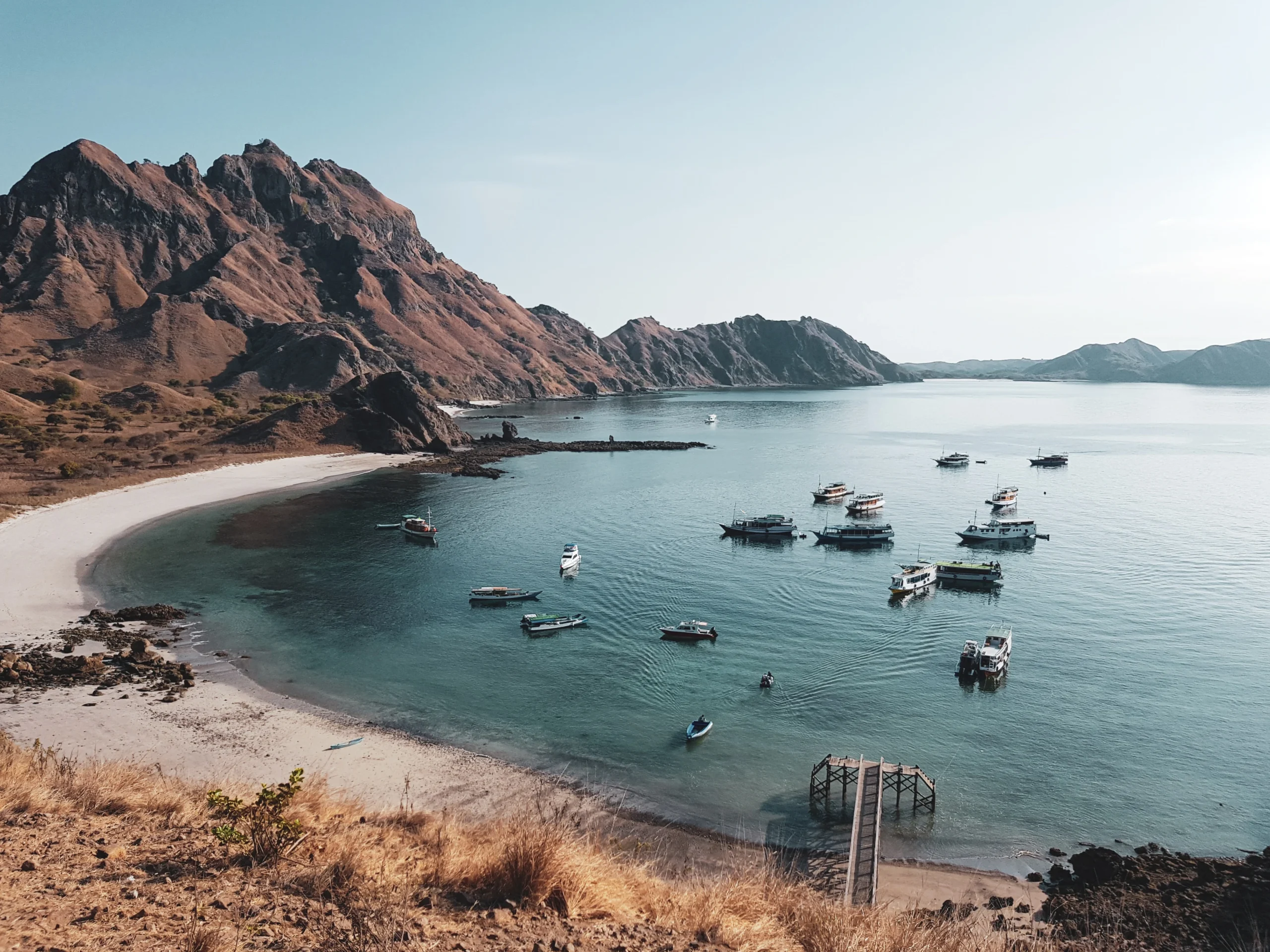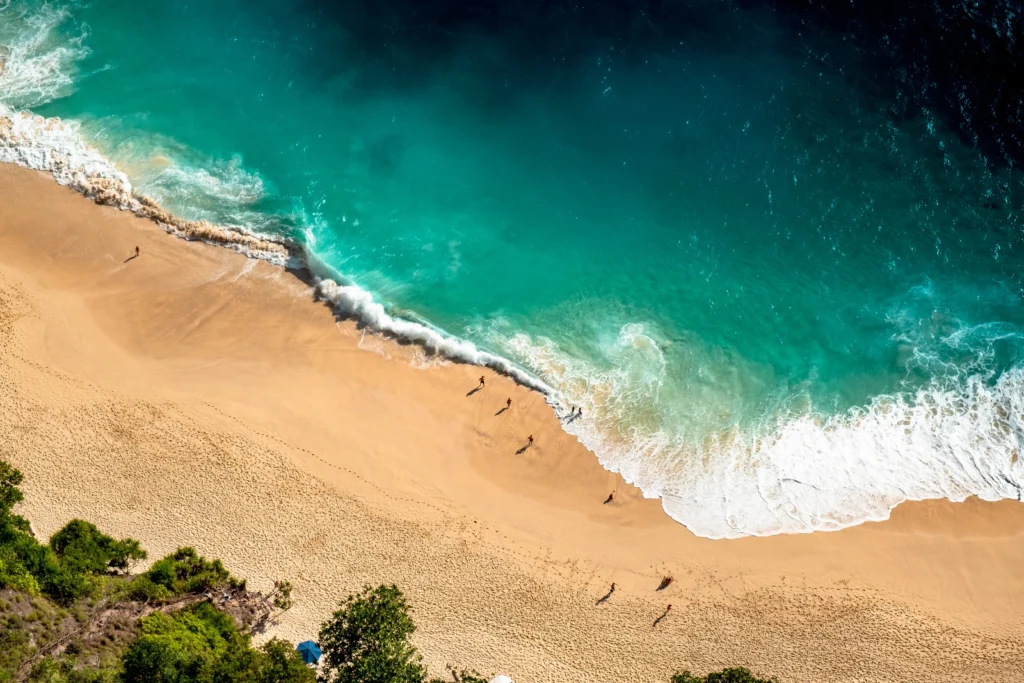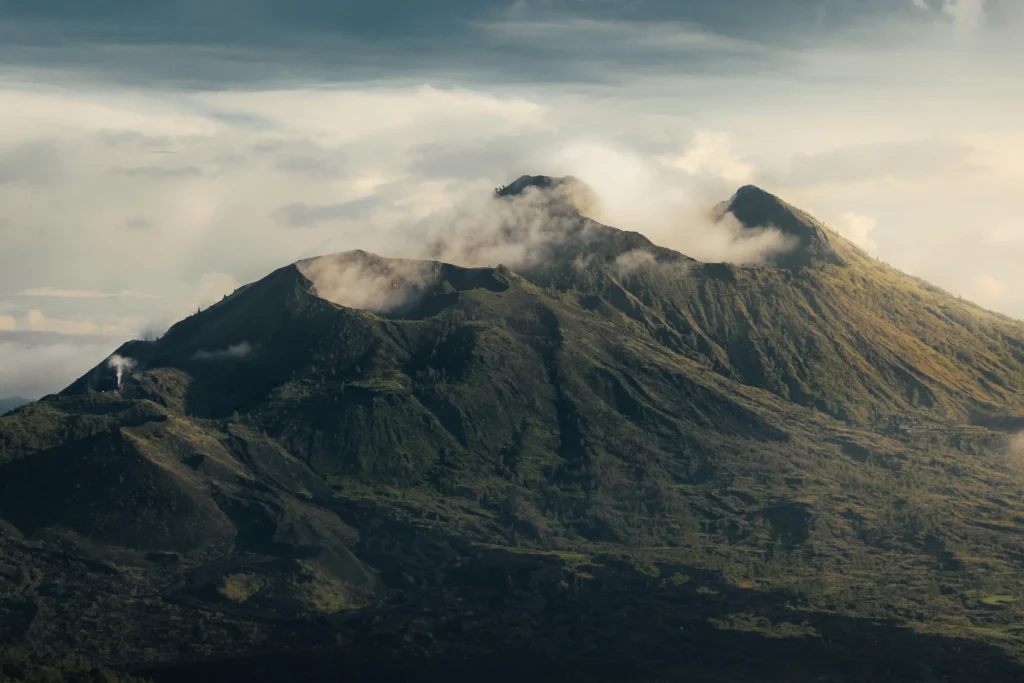Indonesia in February: Enchanting Escapes and Secrets
- Indonesia in February: Enchanting Escapes and Secrets
- Introduction: Discovering Indonesia in February
- Understanding Indonesia's Weather in February
- Cultural and Festive Highlights Indonesia in February
- Best Destinations to Visit in Indonesia During February
- Indonesia's Natural Beauty in February
- Savoring Indonesian Cuisine in February
- Planning Your February Trip to Indonesia in February
- Indonesian Customs and Etiquette in February
- Health and Safety in Indonesia
- Budgeting for Your Trip
- Frequently Asked Questions about Traveling to Indonesia in February
- Conclusion: Embracing the Allure of Indonesia in February
Introduction: Discovering Indonesia in February
Indonesia, a land of islands where emerald seas meet ancient cultures, offers a travel experience like no other. Planning your travel budget months in advance for a trip to Bali and Lombok. February, nestled comfortably between the high and low tourist seasons, presents a unique opportunity to explore this diverse archipelago, enjoying the sea temperature in Bali or discovering the jungle in Borneo. As the monsoon rain gently gives way to sunnier days, Indonesia in February – especially Malang – is a vibrant mix of cultural festivities, natural beauty, and tranquil tourist spots.
During this period between May to September, visitors can enjoy a blend of pleasant weather, fewer crowds, and the opportunity to participate in some of Indonesia’s most vibrant cultural events. Whether you’re a beach lover, a culture enthusiast, or an adventure seeker, Indonesia in February has something special in store for you.
Understanding Indonesia’s Weather in February
Overview of Climate
February in Indonesia is a time of transition, marking the end of the rainy season and the beginning of warmer, drier days. This climatic shift varies greatly across the extent of the archipelago, from the spice islands to the Moluccas Islands, offering a diverse climate experience. In popular destinations like Bali and Java, the rainfall reduces significantly, paving the way for more sunshine and less humidity. However, it’s important to note that occasional showers can still occur, adding a refreshing touch to the warm tropical climate.
Regional Variations
Indonesia’s geographical diversity means that weather conditions can vary markedly from one region to another. In Sumatra and Kalimantan, February may still experience considerable rainfall, whereas the eastern islands like Flores and Sumba start enjoying drier weather. This regional variation is crucial for travelers planning their itinerary, as it influences the choice of activities and destinations within Indonesia.
What to Expect
Travelers should prepare for warm days with temperatures averaging around 25°C to 30°C (77°F to 86°F). Light clothing, sun protection, and waterproof gear for unexpected showers are advisable – a basic weather guide for much of Indonesia. The evenings are comfortably cool with average daily temperatures perfect for beachside dining in the Moluccas Islands or exploring the local night markets during the low season. It’s also a good time for outdoor activities like hiking and snorkeling, as the clearer skies and calmer seas make for ideal conditions.
For more detailed weather forecasts and regional variations, travelers can visit Indonesia’s Meteorological, Climatological, and Geophysical Agency (BMKG) for real-time updates.
Cultural and Festive Highlights Indonesia in February
Celebrating Chinese New Year
One of the most vibrant celebrations in Indonesia during February is the Chinese New Year, known locally as Imlek. This festival, particularly prominent in areas with significant Chinese communities like Jakarta, Medan, and Bali, transforms the streets into a spectacle of red lanterns, dragon dances, and festive markets. Visitors can immerse themselves in the celebrations, experiencing the fusion of Chinese traditions with Indonesian culture. The Cap Go Meh festival, which marks the end of the Chinese New Year celebrations in the northern parts of Indonesia, features unique parades and performances that are a must-see.
Local Festivals and Events
Throughout February is also a time for various local festivals in Denpasar reflecting Indonesia’s diverse cultural heritage. In Bali, the Pesta Kesenian Bali, a significant cultural event to target if you’re planning to visit Bali during the high season. (Bali Arts Festival) begins, showcasing traditional Balinese dance, music, and art. In Central Java, the Discover the weather of the Javanese New Year if you definitely plan to visit the island of Java then or Satu Suro is observed with mystical ceremonies and cultural performances. These events provide a deep dive into the local traditions and are a treat for cultural enthusiasts, similar to the volcano exploration in West Papua.
Cultural Significance
These festivals are not just tourist attractions; they are deeply ingrained in the local way of life. They reflect the rich tapestry of beliefs, traditions, and history that shape Indonesia. Participating in these events allows travelers to connect with the Indonesian people and gain a deeper understanding of their diverse cultures and values in parts of Indonesia.
For more information on festival dates and locations, you can visit the Indonesia Tourism Official Website.
Best Destinations to Visit in Indonesia During February
Bali’s Charm
Bali in February is a revelation. The island sees fewer tourists, offering a more relaxed atmosphere. The weather is a pleasant mix of sunny days and cool evenings, perfect for exploring Bali’s famous beaches, like Kuta and Seminyak, or the tranquil Ubud for its lush rice terraces and vibrant art scene. The Pura Ulun Danu Bratan temple, with its serene setting by the lake, is particularly enchanting during this time of the year, especially when you plan a place in February.
Yogyakarta’s Cultural Richness
Yogyakarta, the cultural heart of Java, is an excellent destination in February. The drier weather is ideal for visiting the majestic temples of Borobudur and Prambanan, where the lesser crowds allow for a more contemplative experience. The city’s rich history and tradition in batik making, puppetry, and Javanese dance offer a deep cultural immersion.
Raja Ampat for Diving Enthusiasts
For divers and marine life enthusiasts, Raja Ampat in February is a paradise. The archipelago, known for its spectacular biodiversity, experiences excellent diving conditions with clear visibility. Witnessing the vibrant coral reefs and diverse marine life in the calm waters of Raja Ampat is a once-in-a-lifetime experience.
Komodo National Park
February is also a great time to visit Komodo National Park. The cooler temperatures make trekking to see the famed Komodo dragons more comfortable. The park’s unique landscape, encompassing savannahs, rainforests, and white sandy beaches, is breathtaking, and the marine life around the Komodo islands is in its prime.
For additional travel inspiration and destination details, particularly of the Moluccas Islands, check out Discover the untouched beauty of the Moluccas Islands with Wonderful Indonesia.: A Travel Guide to Bali, Lombok, and much of Indonesia.
Indonesia’s Natural Beauty in February
Beach Getaways
February’s clearer skies make it an ideal time for water activities and calmer seas make it an ideal time for beach lovers, the best time to catch the beauty of the Indonesian archipelago including Nusa, Java and Bali, and the wetter East Java with the spectacular Bromo and Ijen. Bali’s beaches and the cooler ones in East Java, less crowded this month, offer serene beauty and excellent conditions for sunbathing, swimming, and other water activities. For those seeking more secluded spots, the Gili Islands, with their crystal-clear waters and vibrant marine life, are perfect for snorkeling and diving. Lombok’s beaches, like Senggigi and Kuta, provide a more laid-back atmosphere, ideal for relaxation and sunset views.
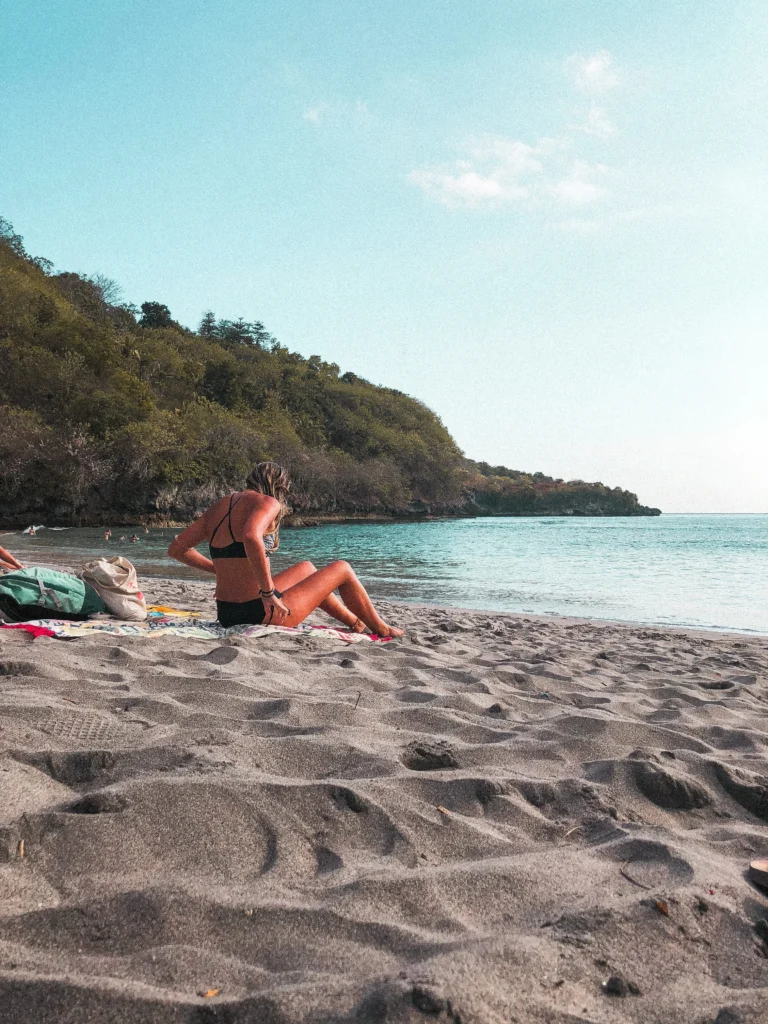
Trekking and Hiking Trails
In the low season, especially February, the diverse landscape of Indonesia becomes a trekker’s paradise. The drier weather conditions are perfect for exploring the volcanic trails of Mount Bromo in Java or the scenic hikes in Bali’s Mount Batur. For a more challenging adventure, the trek to Mount Rinjani in Lombok offers stunning views of the island’s landscape, including the famous Segara Anak crater lake.
Wildlife Watching
If you visit in February, it is also a prime time for wildlife enthusiasts, especially if you plan to seek out orangutans in the jungles of Bukit Lawang. In Borneo’s Tanjung Puting National Park, you can witness orangutans in their natural habitat. The cooler weather enhances your chances of spotting magnificent animals like proboscis monkeys in the monkey forest and exotic birds, necessitating the use of a rain jacket.
For more information on trekking routes and wildlife tours, visit Indonesia Travel Adventure.
Savoring Indonesian Cuisine in February
Seasonal Specialties
Indonesian cuisine, known for its rich flavors and diverse dishes, offers some special treats in February. This is the season for tropical fruits like durian, rambutan, and mangosteen, which can be found in local markets. Seafood is particularly fresh during this time, with grilled fish and seafood satay being popular choices along coastal regions.
Street Food Scene
Exploring Indonesia’s street food is a culinary adventure not to be missed. In February, the cooler evenings are perfect for indulging in local street food delicacies. From the savory Nasi Goreng (fried rice) and spicy Sate Ayam (chicken satay) to the sweet Martabak, there’s an endless variety of dishes to try throughout February in Toraja. Food stalls in Jakarta, Bali, and Yogyakarta offer some of the best street food experiences.
Cooking Classes and Food Tours
For those interested in learning the art of Indonesian cooking, February is a great time to enroll in a cooking class. Many classes include market tours, especially in Surabaya, where you can learn about local ingredients before preparing traditional dishes. These cooking experiences in regions like Toraja and Denpasar provide an immersive way to understand Indonesian culture through its cuisine.
To discover the best culinary tours and cooking classes, consider visiting Cookly, which offers a range of options across Indonesia.
Planning Your February Trip to Indonesia in February
Accommodation Options
Indonesia offers a wide range of accommodation options to suit every budget and preference. Due to the greater hotel and resort deals resulting from lower tourist numbers, February’s off-peak season becomes the best time to catch season prices. Luxury seekers can find world-class resorts in Bali and the Gili Islands, while backpackers can enjoy the hospitality of budget-friendly hostels in Yogyakarta and Jakarta. For a unique experience, consider staying in traditional accommodations like the Rumah Gadang in West Sumatra, the wetter region of East Java or Joglo Houses in Java, much like those in Borneo, blend seamlessly into the jungle environment.
Transportation Tips
It’s an adventure in itself to navigate Indonesia’s islands, from Nusa to Java and Bali, especially when you plan to spend time exploring. Domestic flights are the quickest way to hop between islands, from e the Moluccas to Java and Bali. Airlines like Garuda Indonesia, Lion Air, and AirAsia offer frequent flights connecting major cities and tourist destinations. For shorter distances, consider trains or buses, which provide an opportunity to enjoy the scenic landscapes. When exploring cities, taxis and ride-hailing apps like Gojek and Grab are convenient options. Always remember to check for travel advisories, local transportation updates, and discover the weather in Indonesia in February, especially regarding potential downpours, before your trip.
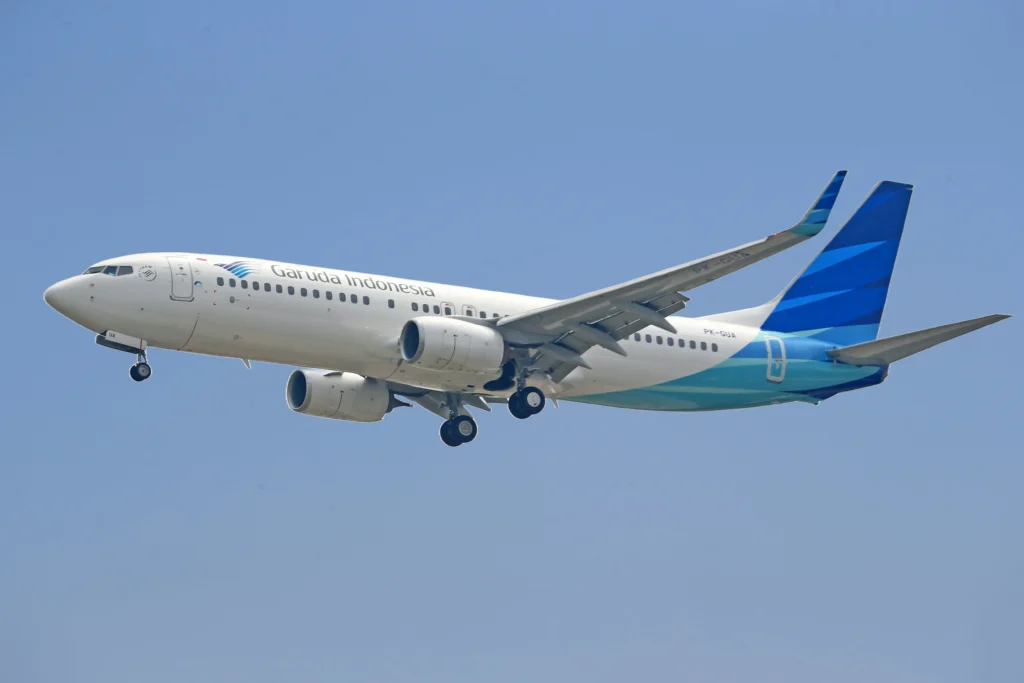
Packing Essentials
Packing for Indonesia in February requires preparing for warm weather and occasional rain showers. Essential items include:
- Lightweight and breathable clothing
- Waterproof jacket or umbrella is a must during the wet season in Indonesia, especially if you’re planning to visit places like Ijen or Bali in February.
- Sun protection: hat, sunglasses, and sunscreen
- Comfortable walking shoes for exploring cities and hiking boots for treks
- Mosquito repellent and basic first-aid kit
- Swimwear for beach destinations
- Remember to bring adapters and chargers for electronic devices when you go to Indonesia.
For more travel tips and updates, visit the Indonesia Travel Guide.
Indonesian Customs and Etiquette in February
Understanding Local Customs
Indonesia is a culturally rich country with diverse customs and traditions. In February, when many festivals and celebrations occur, understanding and respecting these customs is crucial. When visiting temples or religious sites, dress modestly and follow the local guidelines. For instance, wearing a sarong is a common practice in Balinese temples. Always ask for permission before taking photographs, especially during ceremonies or festivals.
Language Tips
While English is commonly understood in tourist areas, learning a bit of Indonesian can enhance your experience, especially if you plan to spend time on the less packed island of Java. Phrases like “Terima kasih” (Thank you) and “Selamat pagi” (Good morning) can go a long way in interacting with locals.
Responsible Tourism
Responsible tourism is essential, especially during cultural events and festivals. Be mindful of your environmental impact by minimizing waste and conserving water. By buying local foods and crafts, support local artisans and businesses, especially those on the island of Java. Most importantly, be respectful of cultural performances and rituals — they are not merely tourist attractions but integral parts of the local heritage.
For more information on cultural norms and responsible travel in Indonesia, you can refer to Cultural Atlas.
Health and Safety in Indonesia
Health Precautions
When traveling to Indonesia in February, it’s important to consider several health precautions:
- Vaccinations and a comprehensive weather guide are essentials when planning a trip to Indonesia. and a comprehensive weather guide are essentials when planning a trip to Indonesia.: Ensure you are up-to-date with routine vaccinations. Additionally, vaccines for Hepatitis A and Typhoid are recommended due to the risk from contaminated food and water.
- Health Insurance: Obtain comprehensive travel health insurance that covers medical evacuation, especially if you’re planning on visiting Bromo and Ijen.
- Medical Care: While major cities have good healthcare facilities, remote areas may have limited resources. It’s advisable to carry a basic first-aid kit for minor ailments.
Safety Tips
- Outdoor Activities: If engaging in outdoor activities like trekking or diving, ensure you’re well-prepared and accompanied by a reputable guide or instructor.
- Water Safety on the Island of Bali: Be cautious when swimming in the sea, particularly during the rainy season, as currents can be strong. Always heed local advice and warning signs.
- Protect Against Mosquitoes: Use insect repellent and wear long-sleeved clothing, especially in the evenings, to protect against mosquito-borne diseases like Dengue fever.
General Safety
- Respect the local laws while exploring different parts of Indonesia, whether it’s the cultural aura of Yogyakarta or the dense jungles of Borneo.: Familiarize yourself with local laws and customs to avoid any inadvertent offenses, especially pertinent if you’re venturing into less-touristed regions like West Papua or Borneo.
- Secure ValuablesKeep your valuables secure and stay vigilant in crowded areas on the island of Java to avoid pickpocketing, which is best avoided.
- Emergency Contacts: Keep a list of emergency contacts, including local emergency services and your country’s embassy or consulate in Indonesia.
For detailed health and travel advisories for Indonesia, you can visit the Before your trip, take the time to consult with the Centers for Disease Control and Prevention (CDC) months in advance, especially if you plan to spend time in areas prone to flooding. website.
Budgeting for Your Trip
Cost of Travel in February
Traveling to Indonesia in February can be relatively cost-effective due to it being the shoulder season. Here’s a breakdown of potential costs:
- Accommodations in the Island of Bali: Prices are generally lower than in peak season. Budget accommodations can start from as low as $10 per night, while luxury resorts may offer off-peak rates.
- Flights: Domestic and international flight prices may be lower. It’s advisable to book in advance and watch out for deals.
- Food and Dining: Street food is an affordable option, typically costing around $1-$3 per meal. Mid-range restaurant meals might cost between $5-$15.
- Activities: Prices for activities like guided tours, diving, or cultural shows can vary. Many outdoor activities like hiking are low-cost or free.
Money-Saving Tips
- Use Public Transportation: Opt for local buses or trains for intercity travel to save money.
- Eat Local: Eating where locals eat, not only saves money but also offers an authentic experience.
- Choose Local Guides: Hiring local guides directly instead of through agencies can be more economical and provides a more personal experience.
- Travel Insurance: While it’s an added cost, it can save money in case of unforeseen medical issues or travel disruptions.
For budgeting tools and cost estimates, websites like Numbeo Provide detailed cost of living and traveling expenses in various Indonesian cities, including Denpasar and East Java.
Frequently Asked Questions about Traveling to Indonesia in February
Conclusion: Embracing the Allure of Indonesia in February
Indonesia in February stands as a unique and compelling travel destination, brimming with opportunities for adventure, cultural immersion, and relaxation. February is a sweet month to visit Indonesia where the beauty of the dry season begins to emerge, yet the crowds of peak tourist times in places like Bali have not yet arrived. It’s a time when you can explore the vibrant streets celebrating Chinese New Year, wander through less crowded temple grounds in Bali and Java, or dive into the crystal-clear waters of Raja Ampat with greater tranquility.
The diverse landscapes, from volcanic mountains to lush rainforests and serene beaches, are more accessible and enjoyable. The cultural tapestry of the archipelago is vibrant with festivals and events that offer a deeper understanding of Indonesia’s rich heritage. Moreover, the shoulder season also means potentially lower costs for accommodation and travel, making it a budget-friendly option for many.
Whether you’re a solo traveler seeking adventure, a couple looking for a romantic getaway, or a family aiming for a fun holiday, Indonesia in February provides a plethora of experiences. From its culinary delights and rich cultural scenes to its breathtaking natural beauty, Indonesia beckons with the promise of unforgettable memories.
So why wait? Plan your trip, pack your bags, and set off on a journey to explore the wonders of Indonesia in February. Here’s our guide to making a decision you’re unlikely to regret, as you discover the myriad treasures this remarkable country, especially places like Bali and Lombok, has to offer during this special time of the year.
For more travel inspiration and tips on exploring Indonesia, visit Indonesian Travel Guide Destinations.


